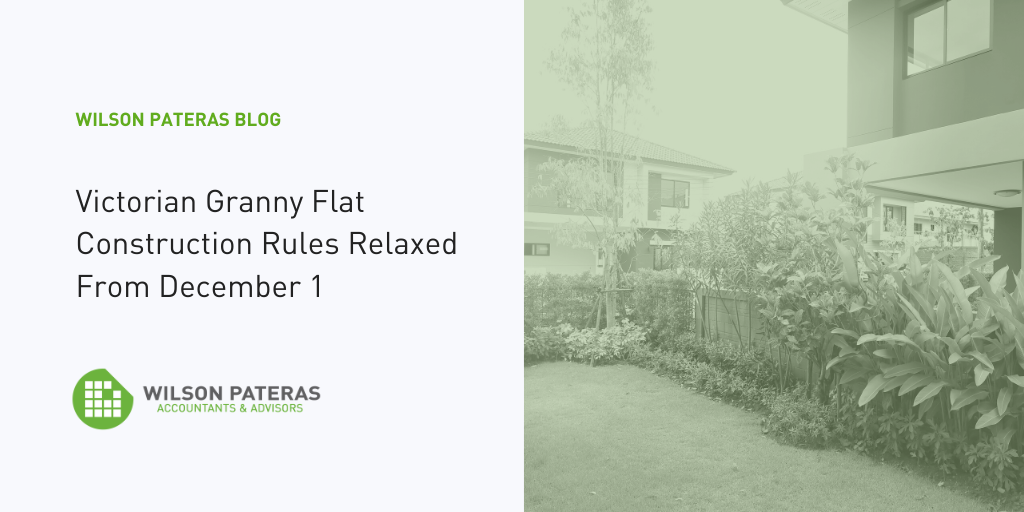
The recent decision by the Victorian government to relax the rules around granny flats due to the current housing crisis provides new opportunities for property investors.
However, there are important legal, finance and tax considerations before you decide whether investing in a granny flat on your property is a good option for you.
How are Victorian granny flat rules being relaxed?
Victorian granny flat rules are being relaxed in two ways from December 1:
- Granny flats less than 60 square metres when built will no longer require a planning approval permit before being constructed. Currently, a permit is required for any granny flat constructed on any Victorian property.
According to Premier Jacinta Allan:
“We know for many Victorians the burden of planning approvals has put building a small second home in the too hard basket – we’re making it easier, so families can grow together and have a place to care for loved ones.”
However, you will still need a building permit for a granny flat to ensure the dwelling meets the residential design code in terms of setback requirements from the property’s main dwelling, as well as other site requirements.
- There will no longer be any restrictions on how a Victorian granny flat can be used, unlike now where they must be used to house a person who is dependent on a resident of the existing dwelling.
Minister for Planning Sonya Kilkenny said:
“Small second homes are an important part of our bold planning reforms – as we get on with building 800,000 new homes in Victoria over the next decade – ensuring Victorians can live where they want to live and close to family.”
This means that Victorian granny flats will be able to have additional permitted uses from December 1, including being rented out for additional income. However, the granny flat area will still not be allowed to be subdivided and sold off separately from the main property dwelling.
The potential benefits of investing in a granny flat
Investing in a granny flat can provide you with any of the following potential benefits:
- Accommodating the supported living needs of an elderly loved one, while allowing that person to retain some independence.
- An increase in the value of your property.
- Rental income if you decide to rent the space out.
Finance considerations
If you decide to construct a granny flat on your property, then you may need a loan. Granny flat construction costs can vary depending on their size and other characteristics. They generally start from around $80,000 and range up to $300,000 plus, but that is cheaper than building most other types of accommodation.
Tax considerations
There can be tax implications of constructing a granny flat on your property, depending on how it will be used. For example, if you use it to gain rental income, then you will pay tax at your marginal rate like you would with any investment property, less any eligible deductions.
There may also be capital gains tax (CGT) implications, however you may be eligible for an exemption if the flat has a formal, non-commercial granny flat arrangement in place for life for one of your dependents.
Please contact us if you would like to enquire about your lending options for building a granny flat on your property. Our tax advisors can also discuss the potential tax implications with you, based on your circumstances.
This content has been prepared by Wilson Pateras to further our commitment to proactive services and advice for our clients, by providing current information and events. Any advice is of a general nature only and does not take into account your personal objectives or financial situation. Before making any decision, you should consider your particular circumstances and whether the information is suitable to your needs including by seeking professional advice. You should also read any relevant disclosure documents. Whilst every effort has been made to verify the accuracy of this information, Wilson Pateras, its officers, employees and agents disclaim all liability, to the extent permissible by law, for any error, inaccuracy in, or omission from, the information contained above including any loss or damage suffered by any person directly or indirectly through relying on this information. Liability limited by a scheme approved under Professional Standards Legislation.





